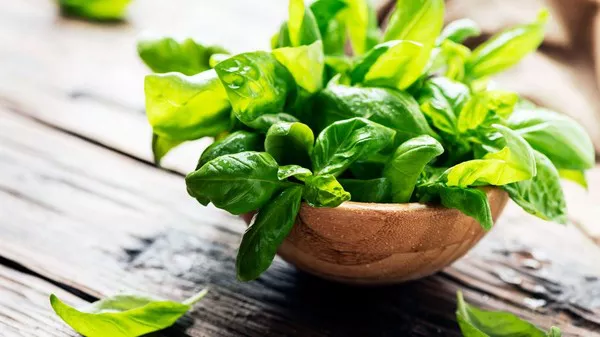Flower pots can bring beauty and vibrancy to any space, allowing us to cultivate nature’s wonders up close. However, along with the beauty comes the potential for unwanted pests, such as flies, to take up residence in these pots. These tiny yet persistent insects can not only be a nuisance but also threaten the health of your plants. In this comprehensive guide, we will delve into effective methods for getting rid of flies in flower pots and maintaining a thriving garden environment. From prevention strategies to natural remedies, we’ve got you covered.
Understanding the Fly Problem
Flies in flower pots can be a result of various factors, including decaying organic matter, overwatering, and poor soil hygiene. These flies, often referred to as fungus gnats, are attracted to the moist, nutrient-rich environment of potted plants. Their presence can hinder plant growth by feeding on root hairs and promoting the growth of harmful fungi. Thankfully, there are several measures you can take to control and eliminate these unwanted guests.
Preventing Fly Infestations
1. Choose Quality Potting Soil: Start with high-quality, well-draining potting soil that discourages excess moisture retention. Opt for soil mixes specifically designed for your plant type.
2. Proper Watering Techniques: Avoid overwatering your plants, as excess moisture can create an ideal breeding ground for flies. Water only when the top inch of soil feels dry to the touch.
3. Use Saucers with Caution: While saucers beneath pots can catch excess water, they can also become breeding grounds for flies if water accumulates. Ensure proper drainage to prevent water from pooling.
Identifying and Eliminating Infestations
1. Diagnose the Problem: Before taking action, confirm that you’re dealing with a fly infestation. Look for adult flies, larvae, or small worm-like creatures in the soil. Adult flies are attracted to light and may be seen flying around the plants.
2. Quarantine Affected Plants: If only a few pots are infested, isolate them from healthy plants to prevent the infestation from spreading.
3. Remove Affected Soil: Gently remove the top layer of soil, where fly larvae are often found. Dispose of this soil away from your garden area.
Taking Action Against Flies
1. Sticky Traps
1.1 Yellow Sticky Traps: Place yellow sticky traps near your flower pots. Fungus gnats are attracted to the color yellow, and the sticky surface of the traps will capture them in flight.
1.2 Homemade Vinegar Traps: Create vinegar traps by filling small containers with apple cider vinegar and a drop of dish soap. Cover the containers with plastic wrap and poke small holes. The flies will be lured by the vinegar and trapped in the liquid.
2. Natural Remedies
2.1 Neem Oil: Neem oil is a natural insecticide that disrupts the life cycle of flies. Mix it with water according to the package instructions and apply it to the soil’s surface.
2.2 Cinnamon Powder: Sprinkling cinnamon powder on the soil’s surface can deter adult flies and larvae due to its antifungal properties.
2.3 Beneficial Nematodes: These microscopic organisms prey on fly larvae. Apply nematodes to the soil to control the larvae population effectively.
3. Soil Drying and Airflow
3.1 Allow Soil to Dry: Allow the soil to dry out between waterings. This helps break the lifecycle of the flies, as they prefer moist conditions.
3.2 Increase Air Circulation: Use a fan to improve air circulation around your plants. This reduces moisture buildup and discourages fly infestations.
Maintaining a Fly-Free Garden
1. Regular Monitoring
1.1 Routine Inspections: Regularly inspect your plants for signs of flies, larvae, or any unusual activity. Early detection allows for prompt action.
1.2 Healthy Plant Practices: Maintain optimal plant health by ensuring they receive the appropriate amount of sunlight, water, and nutrients. Healthy plants are less susceptible to infestations.
2. Proper Watering Techniques
2.1 Bottom Watering: Instead of watering from the top, water your plants from the bottom by placing the pots in a saucer of water. This prevents excess moisture on the soil’s surface.
2.2 Soil Aeration: Use a fork or skewer to gently aerate the soil’s surface, improving drainage and reducing moisture accumulation.
3. Beneficial Insects
3.1 Predatory Insects: Introduce beneficial insects like predatory mites or rove beetles that feed on fly larvae and pupae.
3.2 Insectivorous Plants: Certain plants, like sundews and pitcher plants, are natural fly traps. Including them in your garden can help control fly populations.
Conclusion
Flies in flower pots need not be a hindrance to your gardening endeavors. With a combination of preventive measures, natural remedies, and vigilance, you can effectively eliminate these pests and create a healthy, thriving garden environment. Remember that a proactive approach to maintaining proper soil hygiene, moisture control, and plant health is key to preventing future infestations. By implementing the strategies outlined in this guide, you’ll be well on your way to enjoying a garden filled with flourishing plants and free from the unwelcome presence of flies.


